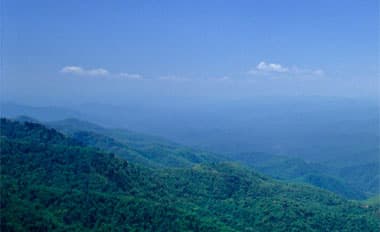Defect or Natural Characteristic?
- April 7, 2015
- •
- by Ang Schramm
So often I hear the term “defect” interchanged liberally with the word “characteristic,” and it almost always makes me cringe. If we don’t understand the difference, we make it difficult to communicate, and confusion soon ensues.
What IS the difference?
A defect, in terms of decorative hardwood and softwood veneered panel products, is, in the most rudimentary term, a boo-boo. In other words, something bad happened to the panel during some phase of production. A defect is man-induced, and usually includes one or more of the following:
- Damage occurs when a panel or one of its constituents encounters excessive force or other exposures beyond those normally required in handling. Damage may be induced by a lift truck’s forks, a lift truck’s backing into a unit, a panel getting lodged on the infeed to the saw, handling equipment (conveyors, stackers, rollers, etc.) miscues, walking on a panel leaving footprints, and oil leaks, to name just a few examples.
- Manufacturing defects happen during the production phase when something in the process goes sideways. Manufacturing defects include press faults that occur when foreign material becomes pressed into the surface of a panel, or when a foreign body becomes adhered to the press surface such that any panel pressed in that particular press opening will have a “negative” impression of that foreign debris. Other manufacturing defects include sand throughs, sander snipe, saw tear, large splits or laps in a face or back in excess of the grade standard allowance, short or narrow face or back, compromised glue bond integrity (delamination or blows), glue squeeze through the face that can’t be sanded out, knife marks in the face or back, sawn out of square, core imperfections telegraphing or showing through the face, rough cut faces and backs, and core laps and gaps.
Natural characteristics are attributes of the living tree manifested on the surface of a face or back once the tree is reduced to logs and subsequently peeled or sliced into thin veneers. They occur, as the designation infers, naturally during the growth and maturity of the individual tree. Natural characteristics cannot be avoided, even though some of them at a certain size, quantity, intensity, and overall appearance are not aesthetically pleasing. For this reason, the Hardwood Plywood and Veneer Association, in conjunction with its membership and interested parties, has published an industry standard for face and back appearance since 1935. The standard’s current designation is ANSI/HPVA HP-1-2009, and it is used by all major plywood manufacturers to determine a given grade for a piece of veneer inconsideration of the size and number of attributes as limited in the standard for face grades “AA” through “E,” and back grades “1” through “4.”Natural characteristics are broken down in the standard into 4 groups, as follows:
-
Color and matching includes the presence of heartwood or sapwood, color contrasts at splice joints, color variation, type of matching of components in a face, and component width.
- Natural characteristics, with a continuing parenthetical statement that “except as limited below, natural characteristics are not restricted,” include pin knots and small burls, larger knots, mineral streaks, bark pockets, worm track, vine mark, and cross bars (figure).
- Manufacturing characteristics which technically could be considered defects, include rough cut and ruptured grain, splits, and allowable repairs.
- Special characteristics is a category intended to show allowable appearance of those attributes unique to certain species, such as ray flake in quarter sliced oak, gum in cherry, and bird peck in hickory and pecan.
In conclusion
Whether a panel is unacceptable due to the inclusion of damage or objectionable natural characteristics, some resolution must be sought. If we are able to communicate in accurate terminology, with specific reference to any of the above, then we are much closer to a prompt and reasonable outcome!






